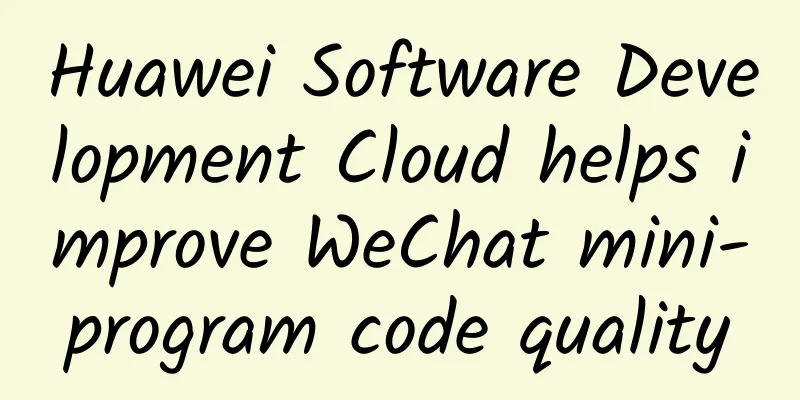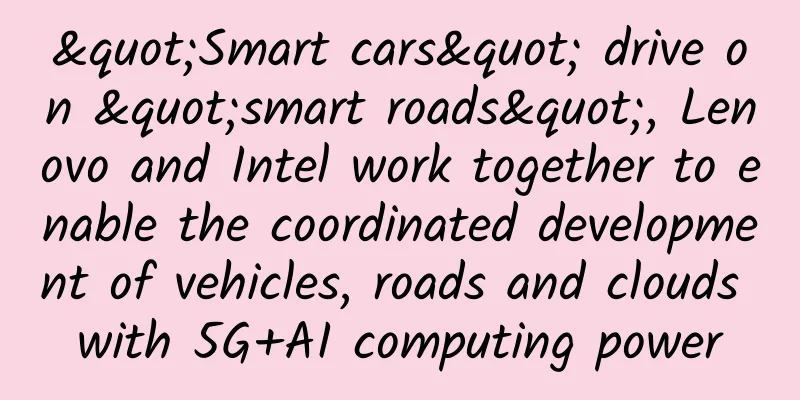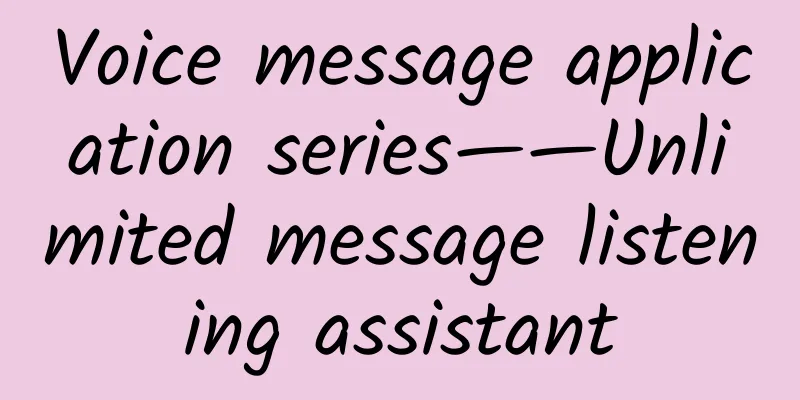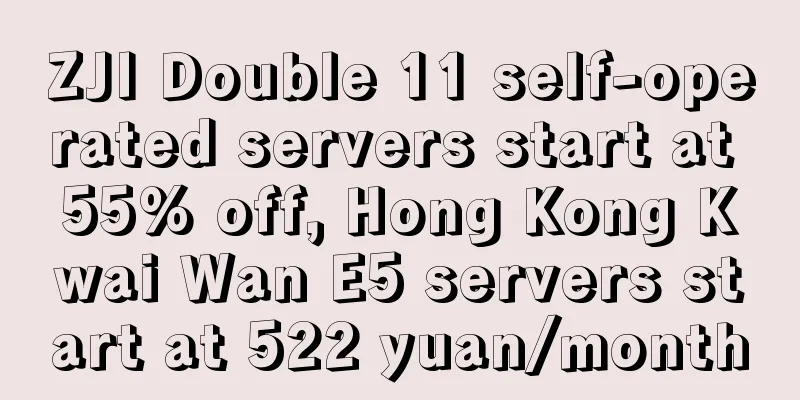ROOBO CTO Lei Yu: Artificial intelligence will not take the big and comprehensive route, vertical fields will blossom first
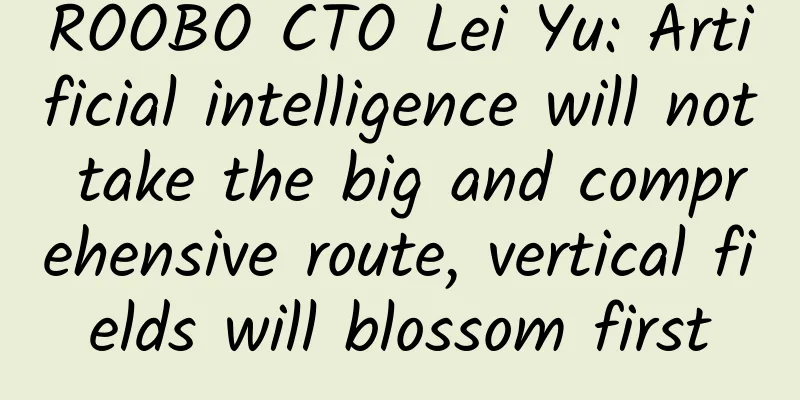
|
[Original article from 51CTO.com] Not long ago, at the just-concluded WOT2017 Global Innovation Technology Summit with the theme of "Artificial Intelligence, More Than a Technological Revolution", ROOBO CTO Lei Yu gave a keynote speech on "Artificial Intelligence Interaction on the Terminal". After the speech, the reporter interviewed him and asked him to share his wonderful views on the field of artificial intelligence interaction. What does a good human-computer interaction system look like? Lei Yu believes that a good human-computer interaction system needs to work together from the intelligence layer, VOI layer, and hardware layer, be able to carry rich content resources, realize offline artificial intelligence through advanced human-computer interaction, and ensure safety while providing low latency. In the past, when people talked about human-computer interaction, they were mainly talking about human-computer interaction at the software level, such as touch, mouse, and CNC. However, in the future, human-computer interaction needs to consider hardware, software, and artificial intelligence together. The reason is that people's input methods have changed, and input has begun to include voice and images. Therefore, when considering human-computer interaction, it is necessary to package the whole thing to form a trinity of hardware, software, and cloud. Several core technical points that need to be improved In the scenario of human-computer dialogue and chat, Lei Yu believes that technology is needed to support signal processing, interactive recognition and all aspects of dialogue. At present, he believes that the signal processing and language capabilities of the front end are not enough to receive and express natural language, which is a critical issue. Within two to three years, the key issue that needs to be solved is the combination of signal processing and speech recognition. After these problems are solved in the future, it will ultimately depend on whether natural language processing is intelligent enough. In human-computer interaction, Lei Yu regards VID as a very critical link. VID belongs to the most important connection layer of human-computer interaction that combines signal processing and voice recognition, because signal processing only removes the noise of the environment and then extracts the human voice that the system wants. However, this voice also includes suspected human voices, and voice recognition needs to be done while signal processing. The value of VID lies in detecting the required sound and transmitting it to be recognized. It plays a connecting role. If it is not done well, it will be useless no matter how well the two ends do. "This is like a key component in a device. Although it is not the most sophisticated in the engine, the engine of many cars is not a problem, but the chain needs to be replaced. This is the value of the chain." In the dialogue process, how can we technically enable machines to understand human semantics? Lei Yu told reporters that existing technology is more inclined towards natural language understanding. This technology itself is not a new technology, but it is important because it not only converts speech into text, but also understands the intention of the text. This requires the joint efforts of natural language processing and knowledge graphs. Now artificial intelligence has the same IQ as a 3-year-old child "Artificial intelligence is now like a toddler with the IQ of a three-year-old child. It still has a long way to go. The first step in the future is to further improve natural language processing technology; the second is to build vertical knowledge graphs and further strengthen deep learning technology, and the last is to improve reasoning ability." While acknowledging the problems, Lei Yu also expressed his confidence in the future development of artificial intelligence. He believes that the evolution of technology is much faster than the learning and growth of people, so considerable achievements may be made in just ten years. In Lei Yu's opinion, the current robotics field is still more about trying new things. He divides the robotics field into the enterprise market and the consumer market. The consumer market still has a long gestation period because customers do not know their needs, and the real needs of users are far from the existing realization capabilities. The user needs in the enterprise market are clearer. For example, taking smart homes as an example, users are very clear about which devices need to be made smart and what functions they need to achieve. This market is booming and there is still some time to cultivate it. When talking about the future development of artificial intelligence, Lei Yu believes that future smart devices will not take a large and comprehensive route, but will focus on vertical fields, such as medical companionship in the medical industry, interactive children's education in the education industry and other functions. [51CTO original article, please indicate the original author and source as 51CTO.com when reprinting on partner sites] |
<<: Tingyun launches five major weapons to realize complete DEM functions first in the country
>>: Free WiFi is in trouble, experts predict: it may disappear in the future
Recommend
Interesting explanation of bearer: PTN and IPRAN in one article
The "old-fashioned" old boss—SDH The tr...
Enlightenment on using Smallcell to solve deep network coverage in the post-5G era
1. Current status of network coverage in the post...
5G, why not completely jointly build and share wireless access networks?
The key to 5G is to provide diversified services ...
How to Understand and Evaluate Potential Colocation Data Center Providers?
Today, as demand for colocation and wholesale dat...
Network programming - starting from establishing a TCP connection
[[388071]] Preface Network programming is somethi...
Foreign media: As of June, South Korea's 5G users have exceeded 16 million
On August 11, according to foreign media reports,...
197 Fortune 500 companies choose Huawei to achieve win-win in the new ICT era
At the 2017 Huawei Connect Conference HUAWEI CONN...
From "application availability" to "service accessibility" - the DNA innovation rule of Borei Data
[51CTO.com original article] In the past, users o...
The overall price of 5G mobile phones fell in January 2021
2020 is a year of rapid development of 5G. The sa...
80VPS May Promotion: 800 yuan/month-E3-1230/32GB/1TB/8C (232 IPs) cluster server
80VPS is offering a promotion for some cluster se...
How to build a secure HTTPS site step by step
[[261093]] Usually a web site opens HTTPS. Taking...
Is the transmission protocol for video interview TCP or UDP?
[[340127]] This article is reprinted from the WeC...
Microcables – an excellent solution for denser and faster fiber deployments
The telecommunications industry is undergoing a m...
Let's talk about UPNP and DLNA protocols
Preface There is no love, only technology. Let me...

